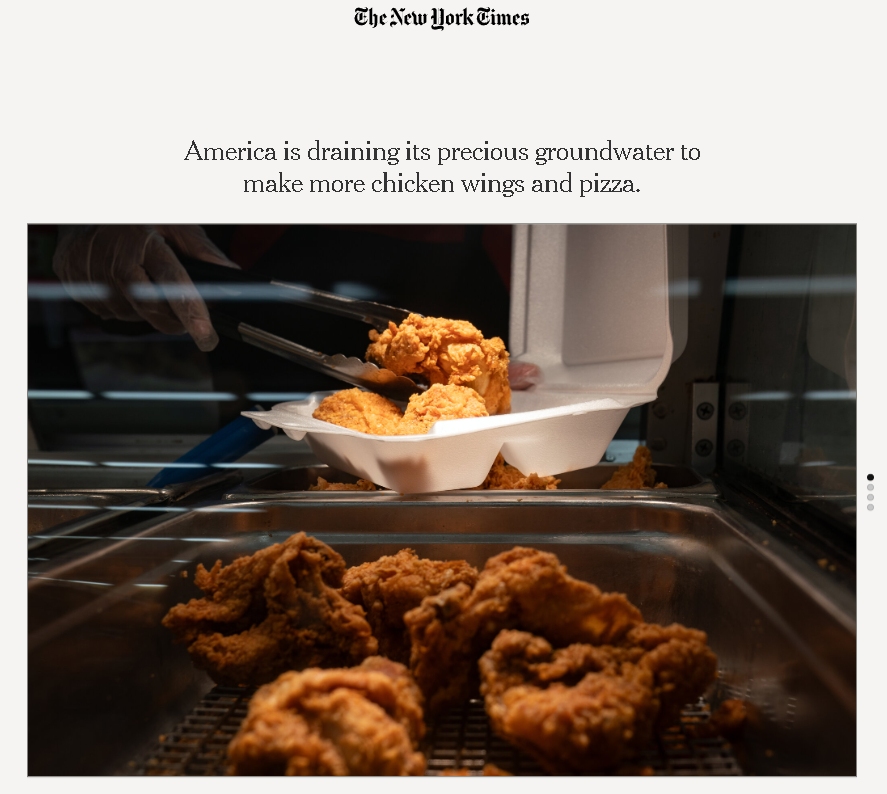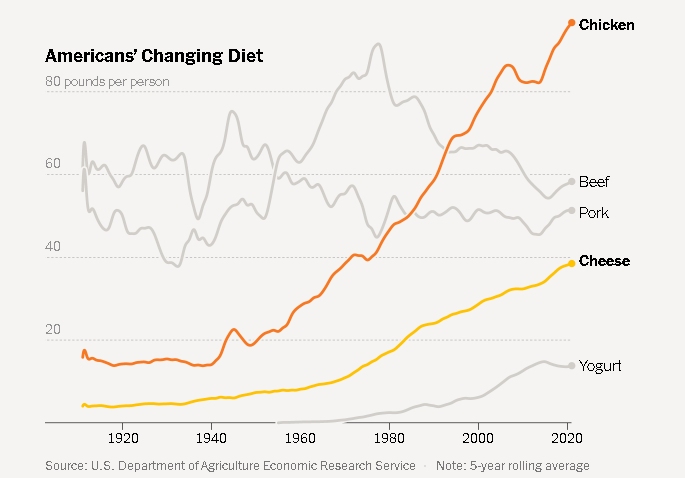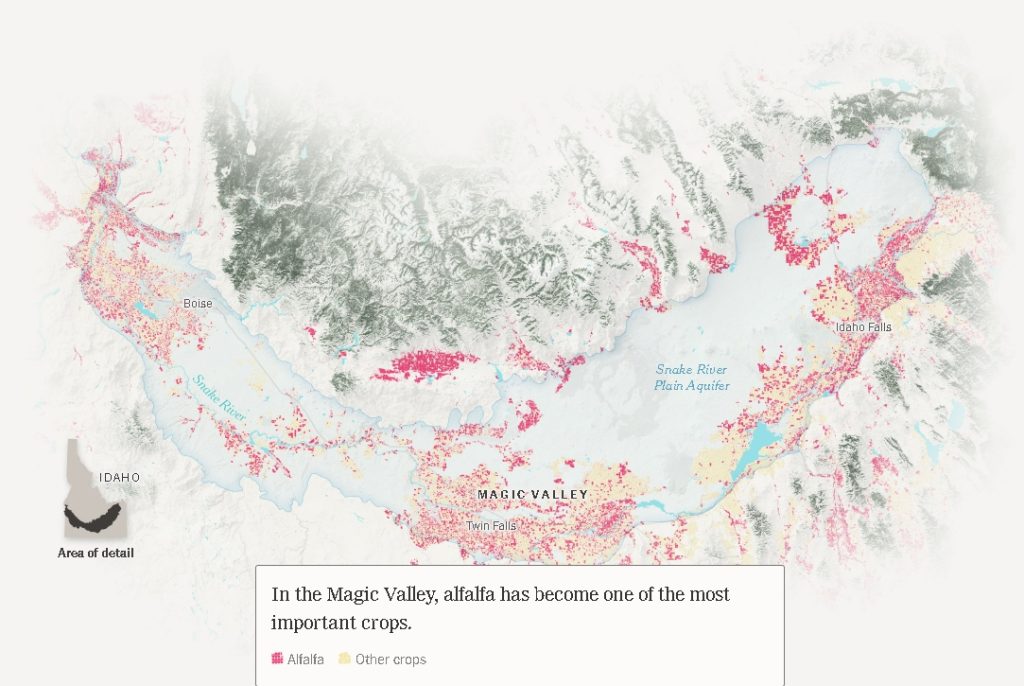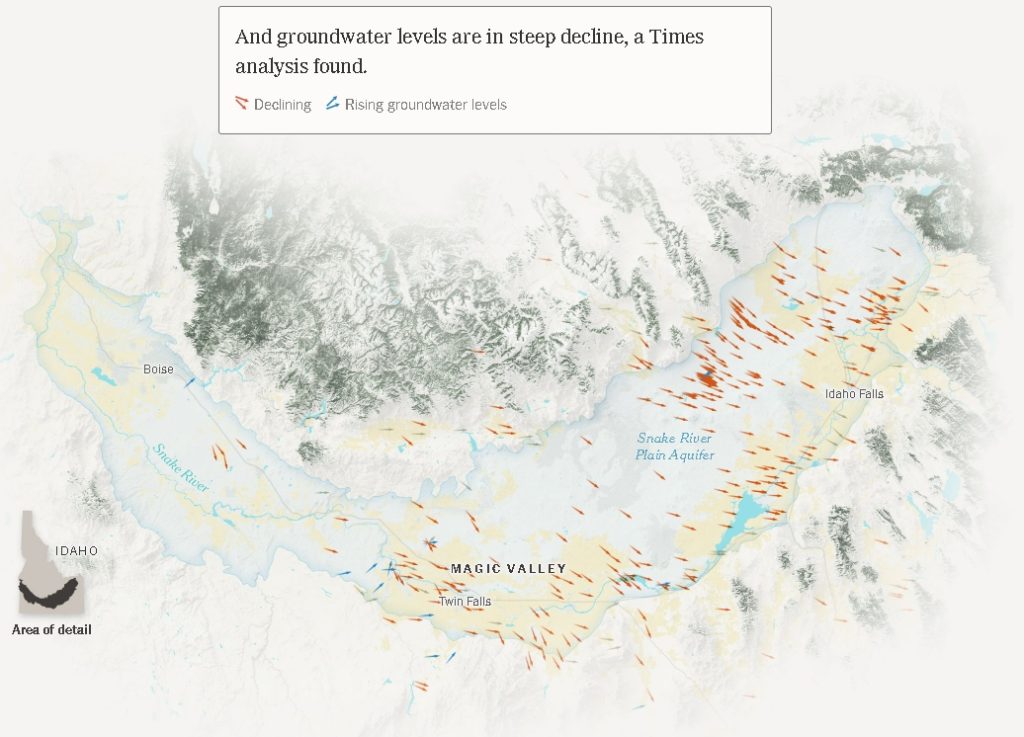67 Why It Matters: Hydrogeology
Freshwater consists of glaciers, groundwater, surface water (such as ponds and lakes) as well as water stored in the biosphere and the atmosphere. The vast majority of freshwater is used in agriculture for irrigation purposes. Again, without this freshwater our food production would suffer. Most people associate mining with metals, fuel resources and gems. However, would it surprise you to learn that we actually mine water? Mining means withdrawing or removing something from within the Earth.
Groundwater is found within the Earth and is our second largest store of freshwater.
Water is critical for survival of humans on our planet. However, we might change our attitude toward water resourcers management.
The Water Wars of Arizona: impact of indusrial agriculture
https://www.nytimes.com/2018/07/19/magazine/the-water-wars-of-arizona.html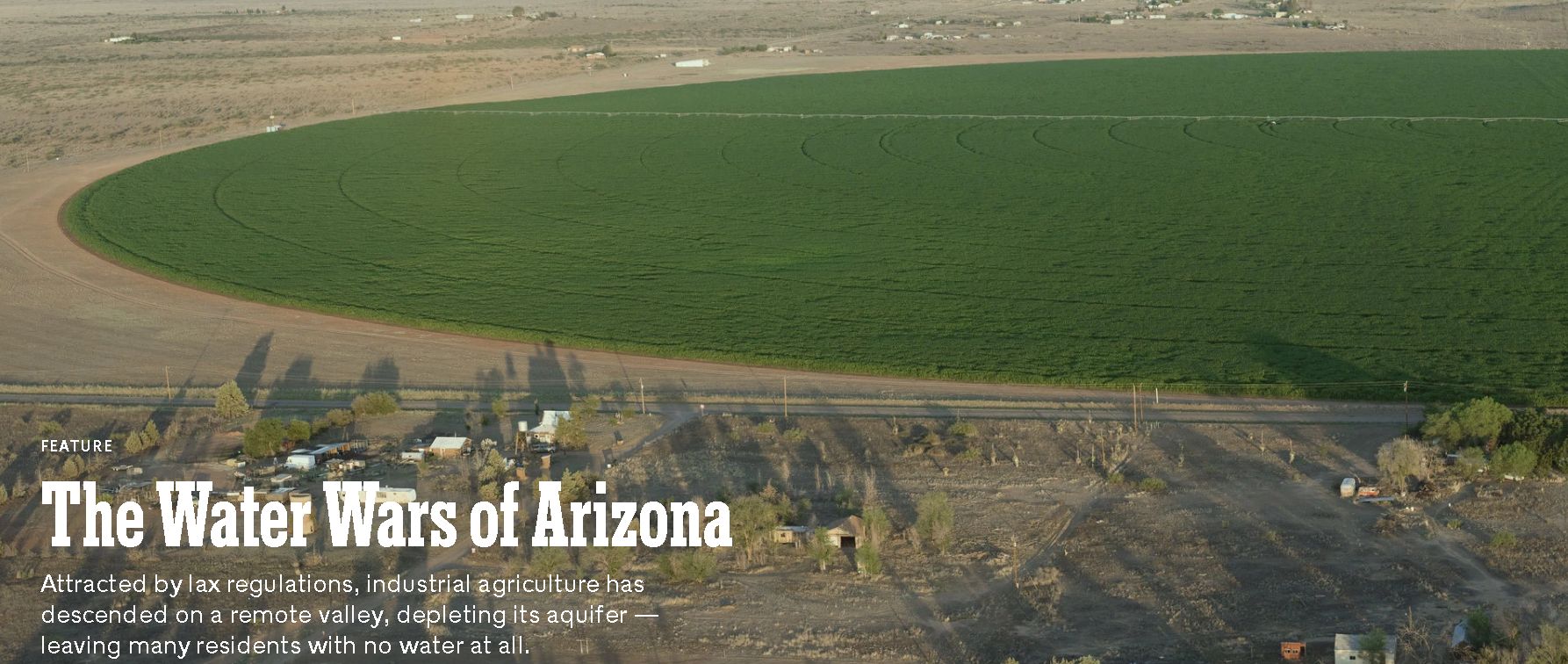
Currently, groundwater use in the US is centered on the Ogallala Aquifer located in the central portion of the United States beneath 8 states: Texas, Oklahoma, Colorado, Kansas, Nebraska, New Mexico, South Dakota and Wyoming. It is approximately 174,000 square miles in area and is a freshwater source for over 13,600,000 acres of farming and ranch lands. This aquifer formed, in part, due to melting glaciers and is the largest aquifer in North America and one of the largest freshwater sources in the world.
Source: U.S. Geological Survey, Water Resources of the United States Publication_Date 200509 Title Estimated Use of Water in the United States, 2000 Geospatial_Data_Presentation_Form Database Publication_Information Publication_Place Reston, VA Publisher National Atlas of the United States Online_Linkage <http://nationalatlas.gov/atlasftp.html?openChapters=chpwater#chpwater>
Initially, farmers only had to drill down anywhere from 25 to 50 feet before they would hit the water table. However, in the 1940’s this began to change. With the technology boom associated with the war and the post war period, numerous devices such as high capacity pumps allowed easier and greater access to the aquifer. In some places, farmers now have to drill over 500 feet before they hit the water table. The Ogallala was originally over 500 feet in thickness but now that has diminished and varies by location. The issue with this particular aquifer is that is being used at a much greater rate than it is recharged. In fact, the Ogallala is considered to be a “fossil aquifer” which means once it is gone, it is gone. What does this mean for us? How does this translate into affecting you or your family?
How America’s Diet Is Feeding the Groundwater Crisis
